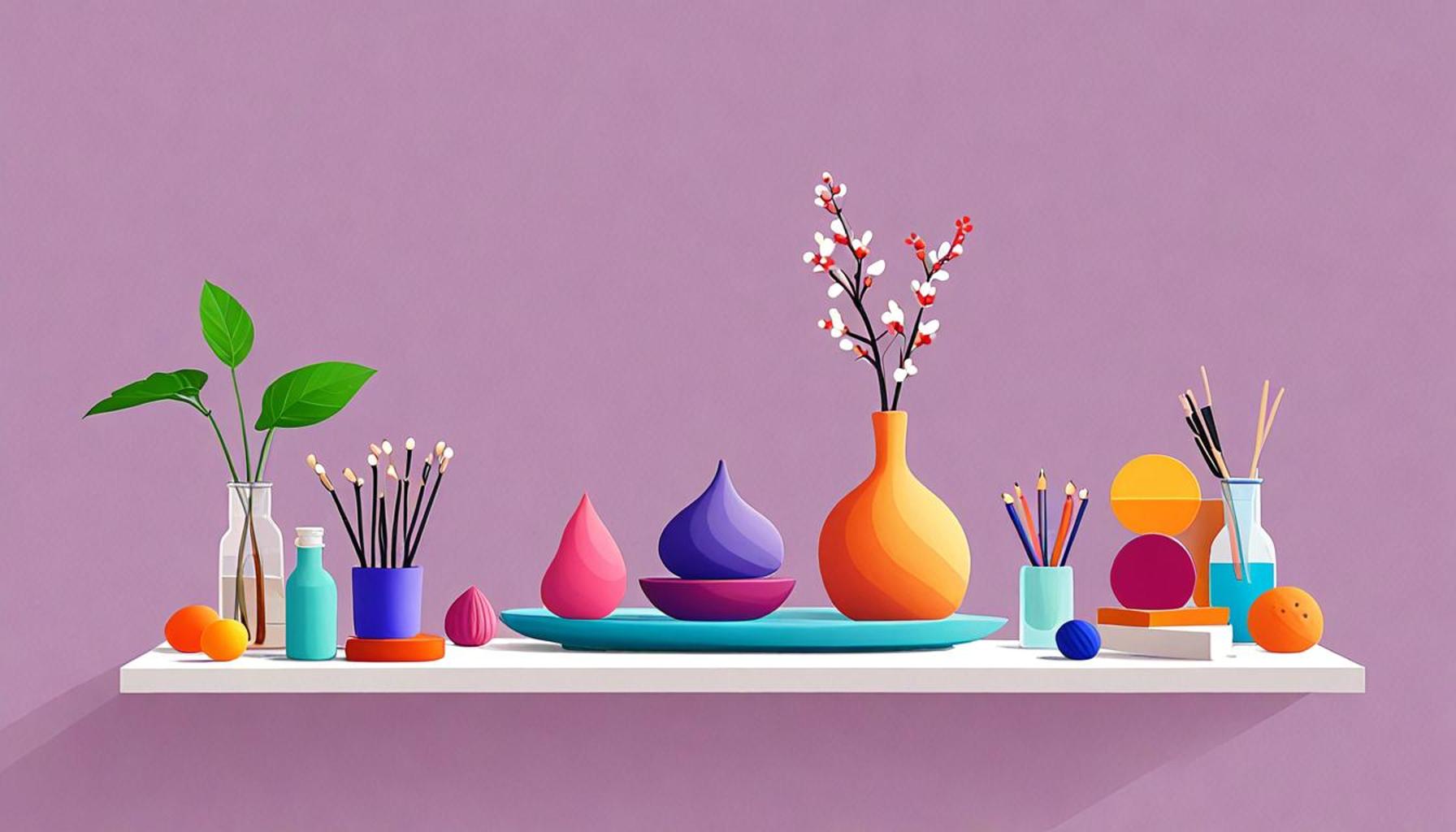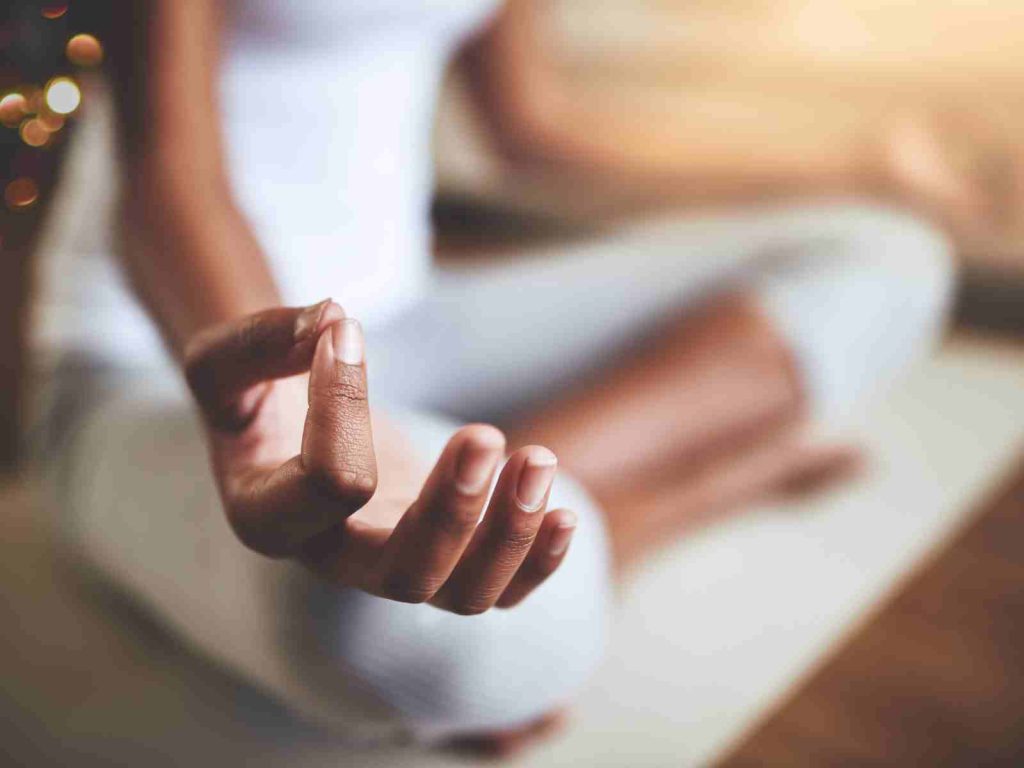Mindfulness and Minimalism: Practices for an Intentional and Organized Life

Discovering the Power of Mindfulness and Minimalism
In today’s fast-paced world, many individuals find themselves overwhelmed by clutter, distractions, and the relentless barrage of information. This clutter can manifest not just physically, within our homes and workspaces, but also mentally, as we juggle endless notifications, commitments, and societal expectations. As an antidote to this chaos, mindfulness and minimalism emerge as powerful practices that can foster a lifestyle prioritizing clarity and purpose, helping us reclaim our focus amidst the noise.
The Intersection of Mindfulness and Minimalism
Mindfulness and minimalism are not just buzzwords; they are profound philosophies that enrich our lives. Here’s how they complement each other:
- Mindfulness encourages us to live in the present, promoting a heightened awareness of our thoughts and feelings. This means taking a moment to pause and acknowledge our emotions, rather than being swept away by them. For example, practicing mindful breathing can help reduce anxiety during stressful moments.
- Minimalism focuses on reducing excess, both physical and mental, to create a more organized environment. In practical terms, this may involve decluttering your living space—removing items that do not serve a purpose or bring joy. Popular figures like Marie Kondo advocate for this approach with her “spark joy” philosophy, promoting a home that reflects inner peace.
- Combining both practices leads to a deeper understanding of what truly matters in our lives. By clearing physical clutter, we create a serene environment conducive to mindfulness, allowing us to reflect on our values and priorities.
Engaging with mindfulness techniques can lead to significant improvements in mental health, from increased self-awareness to reduced stress and anxiety. Similarly, minimalism can simplify our surroundings, which often reduces stress and fosters increased productivity. Together, they enhance our ability to appreciate the simple joys of life, whether it’s enjoying a quiet morning coffee or taking a mindful walk outdoors. The result is a lifestyle infused with intention and clarity.
Why Consider These Practices?
Adopting the approaches of mindfulness and minimalism can yield numerous benefits:
- Improved focus and concentration by reducing distractions.
- Greater emotional resilience, allowing individuals to navigate challenges with a calm and collected demeanor.
- A simplified approach to decision-making, as minimalism helps eliminate choices that lead to decision fatigue.
Moreover, consider the staggering amount of information we encounter daily; studies indicate that the average adult processes around 34 gigabytes of information each day. This constant stream can lead to cognitive overload, making mindfulness and minimalistic approaches increasingly essential. As we delve deeper into the realms of these practices, you will uncover how adopting an intentional lifestyle centered around these principles can transform your life into one filled with meaning and organization, allowing you to cultivate deeper connections and a more profound sense of self-awareness.

Ultimately, the journey towards embracing mindfulness and minimalism opens the door not only to personal growth but also to a more fulfilling way of engaging with the world around us. Whether you are a busy professional, a parent, or someone seeking balance, exploring these concepts further can illuminate paths to a calmer and more intentional existence.
DIVE DEEPER: Click here to discover more
Embracing Mindfulness: Steps Towards Clarity
The practice of mindfulness places a significant emphasis on the present moment, enabling individuals to cultivate deeper awareness and engagement in their daily lives. This intentional focus helps to combat the weariness that comes from a constantly distracted, multi-tasking lifestyle. New research supports this notion, indicating that individuals who engage in regular mindfulness practices experience reduced levels of stress and anxiety, improved cognitive function, and increased emotional resilience. The question many ask is: how can they effectively incorporate mindfulness into their routines?
To begin your journey into mindfulness, consider implementing the following techniques:
- Mindful Breathing: Take a few moments each day to focus solely on your breath. Inhale deeply through your nose, hold for a moment, and exhale slowly. This practice can ground you, shifting your attention away from distractions and towards your inner state.
- Gratitude Journaling: Set aside a few minutes each day to jot down what you are grateful for. By acknowledging the positive aspects of your life, you reinforce a mindset of appreciation and reduce the impact of negative thoughts.
- Daily Reflections: Reflect on your thoughts and feelings at the end of each day. This simple process allows you to process emotions and recognize patterns in your mental state, ultimately enhancing self-awareness.
These practices may seem small, but they can result in profound shifts in how you experience life, especially when paired with a minimalistic approach. By reducing the noise in our environment—both physical and digital—we pave the way for mindfulness to flourish.
The Art of Minimalism: Eliminating the Excess
Minimalism is often misunderstood as merely a trend driven by aesthetics or decluttering projects made popular on social media. However, at its core, minimalism is about prioritizing essential belongings and experiences, stripping away what no longer serves you. As you consider transitioning to a minimalist lifestyle, it’s vital to acknowledge that this is a deeply personal journey—one that can lead to substantial benefits and a clearer mental landscape.
When approaching minimalism, it is important to ask yourself several key questions:
- What items in my life provide value or joy? Focus on identifying objects that are indispensable or contribute positively to your well-being.
- How does my space reflect my values? Evaluate whether your environment aligns with your priorities and aspirations—this is crucial in fostering a more intentional lifestyle.
- What commitments can I let go of? Consider your social obligations and personal projects. Eliminate those that drain your energy without yielding fulfillment.
By intentionally choosing what to keep and what to release, you create a harmonious living space that fosters creativity and productivity. Minimalism, when harmonized with mindfulness, cultivates a lifestyle that is organized, peaceful, and intentional, aligning your space with the mental clarity you seek.
Overall, the fusion of mindfulness and minimalism enhances your ability to lead a satisfying and meaningful existence. As you delve deeper into these practices, you may find that the heart of a tranquil life lies not in accumulating more, but in cherishing less. Exploring these methodologies opens up a transformative pathway, encouraging you to simplify your surroundings and illuminate your mindset for greater peace and fulfillment.
| Advantages | Explanation |
|---|---|
| Enhanced Focus | Practicing mindfulness increases attention and concentration, essential for an organized life. |
| Reduced Stress | Minimalism helps eliminate distractions and clutter, leading to a calmer mindset and reduced anxiety. |
| Increased Productivity | An intentional approach to life maximizes output by prioritizing what truly matters. |
| Improved Well-being | Mindfulness fosters a healthier relationship with oneself and with one’s surrounding environment. |
Incorporating the principles of mindfulness and minimalism into daily routines lays a foundation for an intentional and organized life. By consciously choosing where to direct focus, individuals can cultivate a deeper sense of awareness. The benefits extend far beyond personal productivity; they ripple through various aspects of life, enhancing emotional health and fostering long-term satisfaction. For those looking to simplify and gain clarity, exploring these practices is not just beneficial but transformative. Understanding how mindfulness and minimalism interconnect creates a powerful synergy, inviting both individuals and families to embrace a lifestyle steeped in purpose and tranquility. Discover how making small adjustments to daily habits can yield significant gains in clarity, emotional stability, and overall life satisfaction.
DISCOVER MORE: Click here for stylish decluttering tips
Building an Intentional Space: The Intersection of Mindfulness and Minimalism
Creating a balanced environment is essential for practicing mindfulness and embracing minimalism. Our surroundings have a profound impact on our mental state; cluttered spaces often lead to cluttered minds. To harness the benefits of both mindfulness and minimalism, consider how you can tailor your physical space in a way that promotes peace and clarity.
One important step in this process is to evaluate the importance of your belongings. Each item should serve a purpose or bring joy; if not, it may be time to let go. Studies have indicated that individuals who declutter regularly report higher levels of happiness and contentment. As you go through your possessions, ask yourself: Does this item support my current life goals? This approach encourages not only physical decluttering but equally emotional and mental decluttering, which can enhance your overall mindfulness practice.
Curate a Mindful Environment
As you work toward a more intentional space, think about how you can curate an environment that fosters mindfulness. Here are some strategies that can nurture a serene atmosphere:
- Designate a Mindfulness Corner: Create a dedicated space for mindfulness activities such as meditation, reading, or journaling. Personalize it with elements that resonate with you—like plants, calming art, or soft lighting—to create a sanctuary for reflection and relaxation.
- Control Digital Clutter: In today’s world, it’s not just tangible items that can overwhelm us; digital clutter can be just as stifling. Aim to minimize the number of apps, notifications, and emails vying for your attention. Consider implementing digital detox periods to help center your thoughts and keep your mind clear.
- Mindful Organization: Choose storage solutions that not only keep your belongings organized but also resonate with your aesthetic. Opt for baskets, bins, or shelves that calm your senses, rather than contribute to chaos. The sight of organized spaces can promote a sense of calmness and clarity.
In addition to these practical adjustments, consider the concept of intentional consumption. Mindfulness encourages us to think about the choices we make—not just in regards to our belongings, but also in our everyday actions. Mindful eating, for instance, can transform the routines of consumption into fulfilling experiences. This involves savoring each bite, appreciating the flavors, and understanding where the food comes from, which aligns seamlessly with minimalism’s emphasis on appreciating less.
The Mindful Movement: Reducing the Rush
Our fast-paced lifestyles can often lead to a chaotic existence. The mindful movement promotes slowing down and valuing experiences over possessions. Engage in activities that allow you to connect with your environment, such as walking in nature, practicing yoga, or even enjoying a hobby that has long been sidelined. These practices not only enrich your life but encourage a minimalistic approach by highlighting that the most valuable moments often have little to do with material goods.
As you explore the intersection of mindfulness and minimalism, you may be surprised by how these practices expand your awareness and shift your focus from quantity to quality. A lifestyle rich in intention invites you to experience life more fully, establishing avenues for deeper connections with yourself, your surroundings, and others. By intertwining these philosophies, you pave the way toward a more organized, sustainable, and satisfying existence.
LEARN MORE: Click here for practical tips on keeping your space organized
Conclusion: Embracing an Intentional and Organized Life
As we navigate the complexities of modern life, the practices of mindfulness and minimalism emerge as powerful tools to foster an intentional and organized existence. By cultivating awareness in our daily activities and making conscious decisions about our possessions, we can create an environment that not only enhances our mental clarity but also nurtures our overall well-being. The intersection of these philosophies presents an opportunity to declutter not only our physical spaces but also our minds and emotions.
Implementing mindfulness practices allows us to slow down, savor the present moment, and appreciate the richness of simple experiences. In contrast, minimalism challenges us to reflect on what truly matters, emphasizing quality over quantity in our belongings and choices. Together, they encourage us to embrace a lifestyle that prioritizes meaningful relationships, experiences, and self-awareness, rather than the endless pursuit of material accumulation.
As you consider integrating these principles into your life, ask yourself how each choice aligns with your core values and goals. Seek to cultivate an intentional space that reflects your true self—one that invites serenity and focus. Whether it’s in your physical surroundings or the choices you make about your time and attention, remember that less can indeed be more. By adopting practices of mindfulness and minimalism, you are not just organizing your space but also shaping a fulfilling life that resonates with clarity and purpose.
In conclusion, the confluence of mindfulness and minimalism invites you to embark on a transformative journey. One that demonstrates that a meaningful life is not measured by what you possess but by the depth of your experiences and the connections you foster with yourself and the world around you.


